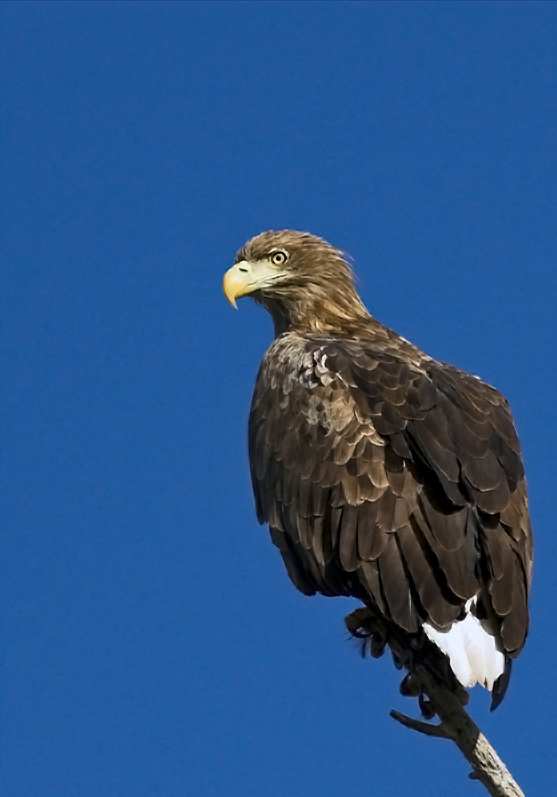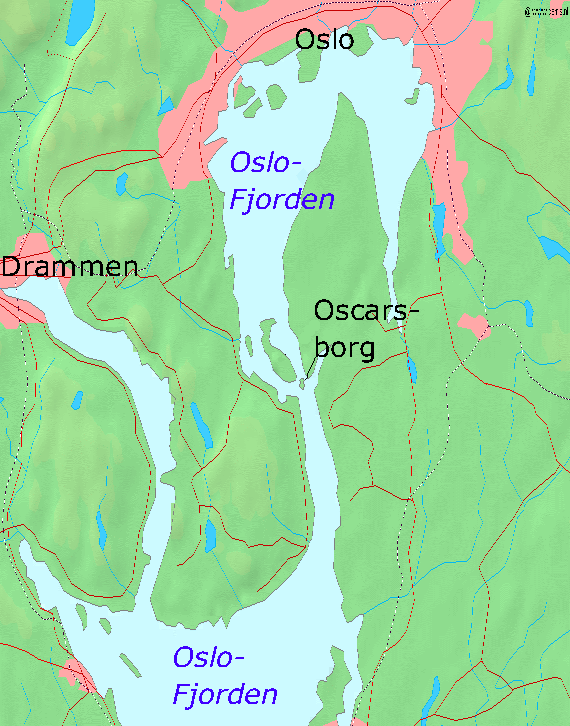|
Håøya, Akershus
Håøya is an island in Oslofjorden in Frogn municipality, Norway. Its area is 5.6 km², which makes it the largest island in Inner Oslo Fjord. It is located between Oscarsborg and Gråøya. Søndre Håøya is a nature reserve area. White-tailed eagles nest on the southeastern part of the island. They returned in 2008 after an absence of 126 years. Visitors are permitted to harvest mushrooms and berries under 'freedom to roam' but other plants and flowers are protected. Goats graze the island during the summer. The island has a mooring jetty, camping areas, swimming beaches, public toilets, cabins for rent, and historic bunkers and buildings. The island was part of the defense of Oslo, along with Oscarsborg Fortress. See also * Drøbak Sound * Oscarsborg Fortress *Oslofjord The Oslofjord (, ; ) is an inlet in southeastern Norway. The fjord begins at the small village of Bonn in Frogn, Frogn Municipality and stretching northwards to the city of Oslo, and then cur ... [...More Info...] [...Related Items...] OR: [Wikipedia] [Google] [Baidu] |
Frogn Nordre Haaöya IMG 3476 From North
Frogn is a municipality in Akershus county, Norway. It is part of the Follo traditional region. The administrative centre of the municipality is the town of Drøbak. Frogn was established as a municipality on 1 January 1838 (see formannskapsdistrikt). The city of Drøbak was merged with Frogn on 1 January 1962. Frogn is located at the southern part of the peninsula between the main Oslofjord and Bunnefjorden. It borders Nesodden, Ås and Vestby. General information Name The municipality (originally the parish) is named after the old ''Frogn'' farm (Old Norse: ''Fraun''), since the first church was built here. The name must be very old and the meaning is unknown. One theory is that it is derived from the Norse word ''frauð'' which means "manure" and the meaning would then be "the fertilized field" (see also Frogner and Tøyen). Prior to 1889, the name was written "Fron". Between 1837 and 1865, the name of the municipality was ''Drøbak landdistrikt''. Coat-of-arms Th ... [...More Info...] [...Related Items...] OR: [Wikipedia] [Google] [Baidu] |
Oslofjorden
The Oslofjord (, ; ) is an inlet in southeastern Norway. The fjord begins at the small village of Bonn in Frogn Municipality and stretching northwards to the city of Oslo, and then curving to the east and then south again. It then flows south to an imaginary line running between the Torbjørnskjær Lighthouse and Færder Lighthouse where it becomes part of the Skagerrak strait. The Skagerrak connects the North Sea and the Kattegat sea area, which leads to the Baltic Sea. The Oslofjord is not a fjord in the geological sense, but in the Norwegian language, the term can refer to a wide range of waterways including inlets such as this one. The bay is divided into the inner () and outer () Oslofjord, separated by the long by wide Drøbak Sound. The innermost part is known as Bunnefjorden. Fjord From 1624 until 1925 the name of the fjord was (or ), since Christiania was the name of the capital during this period (the ''Ch'' was changed to a ''K'' in 1877). Before that time, t ... [...More Info...] [...Related Items...] OR: [Wikipedia] [Google] [Baidu] |
Frogn
Frogn is a Municipalities of Norway, municipality in Akershus Counties of Norway, county, Norway. It is part of the Follo, Norway, Follo Districts of Norway, traditional region. The administrative centre of the municipality is the List of cities in Norway, town of Drøbak. Frogn was established as a municipality on 1 January 1838 (see formannskapsdistrikt). The city of Drøbak was merged with Frogn on 1 January 1962. Frogn is located at the southern part of the peninsula between the main Oslofjord and Bunnefjorden. It borders Nesodden, Ås, Akershus, Ås and Vestby. General information Name The municipality (originally the parish) is named after the old ''Frogn'' farm (Old Norse: ''Fraun''), since the first church was built here. The name must be very old and the meaning is unknown. One theory is that it is derived from the Norse word ''frauð'' which means "manure" and the meaning would then be "the fertilized field" (see also Frogner and Tøyen). Prior to 1889, the name ... [...More Info...] [...Related Items...] OR: [Wikipedia] [Google] [Baidu] |
Norway
Norway, officially the Kingdom of Norway, is a Nordic countries, Nordic country located on the Scandinavian Peninsula in Northern Europe. The remote Arctic island of Jan Mayen and the archipelago of Svalbard also form part of the Kingdom of Norway. Bouvet Island, located in the Subantarctic, is a Dependencies of Norway, dependency, and not a part of the Kingdom; Norway also Territorial claims in Antarctica, claims the Antarctic territories of Peter I Island and Queen Maud Land. Norway has a population of 5.6 million. Its capital and largest city is Oslo. The country has a total area of . The country shares a long eastern border with Sweden, and is bordered by Finland and Russia to the northeast. Norway has an extensive coastline facing the Skagerrak strait, the North Atlantic Ocean, and the Barents Sea. The unified kingdom of Norway was established in 872 as a merger of Petty kingdoms of Norway, petty kingdoms and has existed continuously for years. From 1537 to 1814, Norway ... [...More Info...] [...Related Items...] OR: [Wikipedia] [Google] [Baidu] |
Store Norske Leksikon
The ''Great Norwegian Encyclopedia'' (, abbreviated ''SNL'') is a Norwegian-language online encyclopedia. It has several subdivisions, including the Norsk biografisk leksikon. The online encyclopedia is among the most-read Norwegian published sites, with up to 3.5 million unique visitors per month. Paper editions (1978–2007) The ''SNL'' was created in 1978, when the two publishing houses Aschehoug and Gyldendal merged their encyclopedias and created the company Kunnskapsforlaget. Up until 1978 the two publishing houses of Aschehoug and Gyldendal, Norway's two largest, had published ' and ', respectively. The respective first editions were published in 1906–1913 (Aschehoug) and 1933–1934 (Gyldendal). The slump in sales of paper-based encyclopedias around the turn of the 21st century hit Kunnskapsforlaget hard, but a fourth edition of the paper encyclopedia was secured by a grant of ten million Norwegian kroner from the foundation Fritt Ord in 2003. The f ... [...More Info...] [...Related Items...] OR: [Wikipedia] [Google] [Baidu] |
White-tailed Eagle
The white-tailed eagle (''Haliaeetus albicilla''), sometimes known as the 'sea eagle', is a large bird of prey, widely distributed across temperate Eurasia. Like all eagles, it is a member of the family Accipitridae (or accipitrids) which also includes other diurnal raptors such as hawks, kites, and harriers. One of up to eleven members in the genus '' Haliaeetus'', which are commonly called sea eagles, it is also referred to as the white-tailed sea-eagle.Helander, B., & Stjernberg, T. (2003). ''Action plan for the conservation of white-tailed sea eagle (''Haliaeetus albicilla'')''. In Convention on the Conservation of European Wildlife and Natural Habitats, Strasbourg, France. Sometimes, it is known as the ern or erne (depending on spelling by sources),Love, J. A. (1983). ''The return of the Sea Eagle''. Cambridge University Press, . gray sea eagle and Eurasian sea eagle. While found across a wide range, today breeding from as far west as Greenland and Iceland across to as fa ... [...More Info...] [...Related Items...] OR: [Wikipedia] [Google] [Baidu] |
Freedom To Roam
The freedom to roam, or everyone's right, every person's right or everyman's right, is the general public's right to access certain public or privately owned land, lakes, and rivers for recreation and exercise. The right is sometimes called the right of public access to the wilderness or the right to roam. In Austria, Belarus, Estonia, Finland, Iceland, Latvia, Lithuania, Norway, Scotland, Sweden, Switzerland and the Czech Republic, the freedom to roam takes the form of general public rights which are sometimes codified in law. The access is ancient in parts of Northern Europe and has been regarded as sufficiently fundamental that it was not formalised in law until modern times. However, the right usually does not include any substantial economic exploitation, such as hunting or logging, or disruptive activities, such as making fires and driving offroad vehicles. In countries without such general rights, there may be a network of rights of way, or some nature reserves with foot ... [...More Info...] [...Related Items...] OR: [Wikipedia] [Google] [Baidu] |
Oscarsborg Fortress
Oscarsborg Fortress () is a coastal fortress in the Oslofjord, close to the town of Drøbak in Akershus County, Norway. The best known part is situated on two small islets: ''Nordre Kaholmen'' and ''Søndre Kaholmen''. In addition, the main artillery batteries were on the island Håøya and smaller batteries were on the mainland to the west and east of the fjord. The fortress is best known for sinking the German heavy cruiser '' Blücher'' on 9 April 1940. The fortress was military territory until 2003 when it was made into a publicly available museum and resort. In 2014, Oscarsborg Fortress was given protected status. Early history The narrows at Drøbak, called '' Drøbaksundet'', is a natural point for the naval defence of Oslo, the capital of Norway. The first defences were constructed during the reign of Christian IV of Denmark and Norway and were ready in 1644. However, the fortifications were not involved in battle during the Hannibal War (1643-1645).National Fort ... [...More Info...] [...Related Items...] OR: [Wikipedia] [Google] [Baidu] |
Drøbak Sound
The Drøbak Sound ( Norwegian: Drøbaksundet) is a sound at the Oslofjord narrows between Drøbak and Hurum. "Outer Oslofjord" is a term for the fjord south of the Drøbak Sound until it meets the Skagerrak. "Inner Oslofjord" is a term for the rest of the fjord, starting at the Drøbak Sound and extending northwards towards Oslo, where the fjord turns southwards and continues as the Bunne Fjord. The Drøbak Sound was historically guarded by the Oscarsborg Fortress. During the German invasion of Norway on 9 April 1940, the German cruiser was sunk by the fortress. Oscarsborg Fortress has been converted into a museum and hotel, and there is a ferry to the fortress from Drøbak. The subsea |
Oslofjord
The Oslofjord (, ; ) is an inlet in southeastern Norway. The fjord begins at the small village of Bonn in Frogn, Frogn Municipality and stretching northwards to the city of Oslo, and then curving to the east and then south again. It then flows south to an imaginary line running between the Torbjørnskjær Lighthouse and Færder Lighthouse where it becomes part of the Skagerrak strait. The Skagerrak connects the North Sea and the Kattegat sea area, which leads to the Baltic Sea. The Oslofjord is not a fjord in the geological sense, but in the Norwegian language, the term can refer to a wide range of waterways including inlets such as this one. The bay is divided into the inner () and Ytre Oslofjord, outer () Oslofjord, separated by the long by wide Drøbak Sound. The innermost part is known as Bunnefjorden. Fjord From 1624 until 1925 the name of the fjord was (or ), since Christiania was the name of the capital during this period (the ''Ch'' was changed to a ''K'' in 1877) ... [...More Info...] [...Related Items...] OR: [Wikipedia] [Google] [Baidu] |




